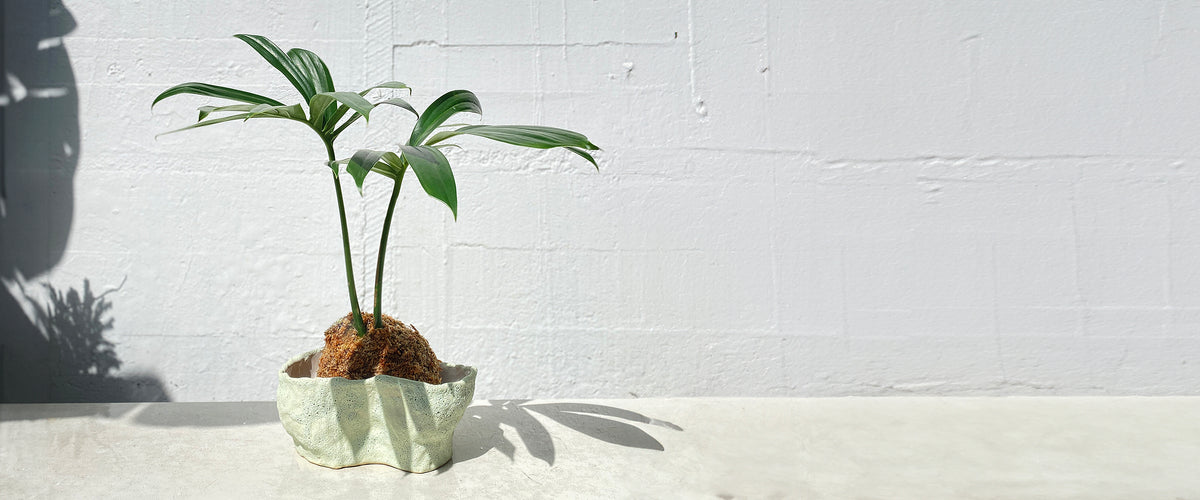Peperomia
Botanical Name: Peperomia
Common Name: Baby rubber plant
Plant Family: Piperaceae
About the fascinating Peperomia….
The genus Peperomia is one of the largest genera of basal angiosperms, comprising about 1500 – 1700 species, mostly native to Central and South America. They belong to the family Piperaceae, which are the source of many spices, potent leaves and botanical goodies that humans love to use. The family includes Black Pepper, Java Pepper, Betel, and Kava, as well as our native Kawakawa known for its peppery taste and medicinal benefits. There is considerable variety in size, colouration, and leaf-shape within the Peperomia genus, though all plants tend to have thick, fleshy leaves and stems.
Peperomia like….
Most Peperomia varieties available to plant lovers are decorative foliage Peperomias, or succulent Peperomias. Decorative foliage Peperomias evolved as epiphytes in rain or cloud forest habitats. These guys like high air humidity and an aerated substrate.
Succulent Peperomias are mostly high altitude plants. They are used to a warm season followed by a cold season both with limited rainfall. Their succulence protects them against direct sun exposure during the summer as well as against dry conditions during winter. These guys don’t need high air humidity, and can do with less water over winter.
Temperature/ Sun
They like warm temperatures, and grow most when it’s between 20° and 24°C. Bright, indirect light is best, though these guys are happy with morning or evening light. Try to prevent direct sun exposure in summer, especially with decorative foliage Peperomias.
Watering….
Because of their epiphytic habit, Peperomias don’t naturally have access to groundwater. Usually, they have a small root system and the leaves and stems are more or less succulent to support drying out of the substrate.
Allow at least the top two inches of soil to dry out between waterings. Mist when temps are high, but hold back over winter. Allow them to drain after watering. Stagnating water will cause stem rot, and overwatering is the most common way of unaliving these plants.
Soil or mix….
Many Peperomia species naturally grow as epiphytically on rotting wood. Therefore, they tend to thrive in a well-aerated, rich soil mixture. A good quality potting mix is recommended, mixed with orchid bark, and perlite or pumice for aeration. If potting directly into a pot with no drainage, throw in a healthy amount of scoria at the bottom, as these guys don’t like having wet feet.
Flowering….
Tiny flowers appear on cream-coloured flower spikes. The individual flowers are almost imperceptible.
Fertilization….
Feed with a liquid fertiliser designed for general houseplants, e.g. seaweed based, during spring and autumn.
Propagation….
Peperomia can be propagated by stem cuttings or leaf cuttings, and it is best attempted during the growing seasons. Stem cuttings are best for variegated varieties, as they can revert to their non-variegated form when propagated via leaf cuttings. Using a clean blade, cut a portion of the stem that has a couple sets of leaves and a growing tip. Remove the lower set of leaves, and put in water, or dip in rooting hormone and plant into soil. For leaf cuttings, snip off a leaf, cut it in half across its width, dip in rooting hormone, and stick it cut-side down into soil. For both methods, make sure the soil stays lightly moist and doesn’t dry out while you are trying to grow roots. You can make a little plastic tent over your pot to increase the humidity, but take it off every few days as Peperomias are semi-succulent and could rot.
Diseases
Peperomias are very hardy, and subject to only a few diseases. The most common diseases are ring spot, oedema, phytophthora rot, and cutting rot.
Peperomia ring spot is caused by a virus that is commonly transmitted by taking cuttings from apparently healthy but infected plants. The disease affects Peperomia obtusifolia and P. obtusifolia var. variegata. Each ring spot starts as a small, translucent spot that enlarges by the outward addition of rings of dead cells, that can disfigure the leaf. Discard all diseased plants when first discovered; they will not recover.
The cause of oedema or edema is unknown, but there is evidence that it may be a virus. Symptoms are small, raised, pimply areas, most pronounced on the underleaf surface. The raised areas are first a darker green than surrounding areas, but later become brown, corky, and often sunken. If severe, diseased leaves may be distorted and somewhat stunted. As with ring spot, discard all diseased plants when first discovered; they will not recover.
Phytophthora rot is caused by a soilborne fungi. The first symptom is a blackening on the stem at the soil line. The rot may encircle the stem causing the lower leaves to droop. Plants are stunted, gradually wilt, wither, and die. Destroy affected plants to stop the spread. Avoid overwatering, and poorly-drained soils.
Maintenance (pruning, legginess, repotting)
Peperomias grow toward the light, so rotate it each time you water if you want a symmetrical plant, or don’t if you want a natural look with perhaps a wonky stem. As the leaves are pretty thick, they may split if knocked around. Trim these off if they become unsightly. Peperomia may become leggy if kept in low light. If this look is not your jam, propagate the plant and try again. As Peperomia have small root systems, they won’t outgrow their pots in a hurry. Repot every few years, if only to refresh the soil. Select a pot that’s not too big, as these guys like to be a little root-bound.
Toxicity
The entire Peperomia family is considered non-toxic. If your dog, cat, turtle or baby eats this plant, they will be fine. You might cry.
Mathieu, G. (2001-2020). The Internet Peperomia Reference. Retrieved from: http://www.peperomia.net/horticulture.asp
Hodgkiss, R. (2021). The Peperomia Page. Retrieved from: https://succulent-plant.com/families/piperaceae.html
University of Illinois Department of Crop Sciences. (1988). Report on Plant Disease: Peperomia Diseases. Retrieved from: https://ipm.illinois.edu/diseases/rpds/653.pdf

